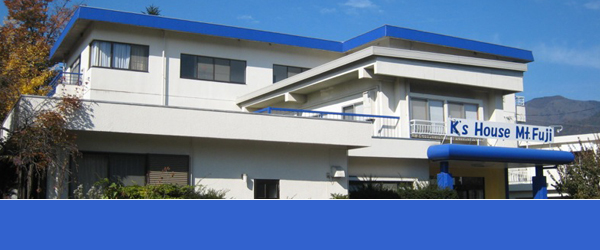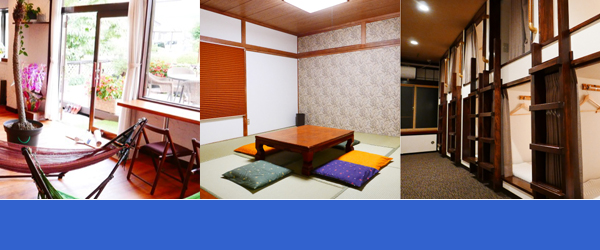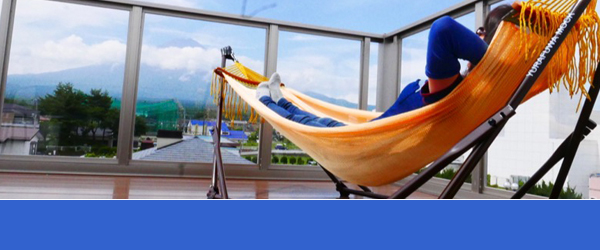Gorgeous all year round, but especially in autumn – the still beauty of Shosenkyo Gorge
When we think of experiencing the autumn foliage here in Fujikawaguchiko, we usually point to the Momiji Corridor – a small row of brightly colored trees north of lake Kawaguchiko. Sure, it’s a great photo-op, but what if you wanted to really make a day out of experiencing the Yamanashi autumn? Shosenkyo might just be the answer.
Shosenkyo is a gorge located north of Kofu city that is frequently considered one of the most scenic gorges in Japan. While it is beautiful all year round, autumn is the ideal time to come here as the changing colors and fallen leaves transform the area.
An important part of Shosenkyo’s popularity is in its accessibility; the trail proceeds at a gentle incline with plenty of paved roads and places to rest, making it suitable for all skill levels and a great alternative to Yamanashi’s endless hiking options.
Getting there
What might be surprising is that the beginning of the trail is quite straightforward to travel to by bus. First, you must travel to Kofu Station.
From Tokyo, the easiest way is to take a bus from Shinjuku Station. The bus terminal is called “Busta Shinjuku”. Ticket purchase and the bus stop are both on the fourth floor. (around 2 hours 10 mins, 2200 yen)
If travelling from Kawaguchiko Station, take a bus to Kofu Station (1 hr 20 mins – 1 hr 40 mins depending on traffic, 1500 yen).
Then, from Kofu Station South Entrance, take a bus to Shosenkyoguchi Bus Stop (昇仙峡口) (around 35 mins, 600 yen). If you would prefer to go downhill, you can get off at Shosenkyo Taki Ue (around 50 mins, 920 yen) five stops later, instead.

This is Kofu station, South Entrance. The bus stop departing for Shosenkyo is to the right, just out of frame. There may be guides waiting by this bus stop, ready to hand you a map of Shosenkyo and answer other questions you might have about Shosenkyo.
For those coming by car, there are three free parking lots.
Beginning of trail: Tenjinmori City Car Park (60 spaces)
Middle point: Green Line Public Car Park (37 spaces) [Very busy during peak fall season]
End of main trail (shops and ropeway): Shosenkyo Taki-ue City Park (80 spaces)
※Currently, Shosenkyo Taki-ue City Park is not available(As of April 2022). You can use parking lots of some souvenir shops and restaurants nearby, but please check terms of use in each parking lot before parking.
Bus Timetable and Car Route Instructions
What to bring
Trainers/sneakers or walking shoes – most of the trail is paved road and the uphill climb is only at a slight incline. Hiking boots should not be necessary.
Food and water – water is always essential during exercise, though there will be some vending machines on the way near the car parks. While there are some restaurants at the start, middle and end of the trail – including houtou restaurants, in case you haven’t tried Yamanashi’s signature noodle dish – there are also plenty of picnic benches along the way, so bringing a packed lunch is a great option.
Warm clothing – for the autumn leaves, early to mid-November is probably the ideal time to visit Shosenkyo. Winter is approaching, so the weather is often bright, clear and cold. Clear days can be deceptively warm, but the temperature will drop rapidly as the sun goes down. It can be windy, too, especially as you proceed higher on the trail. A jacket and one extra layer in a backpack is a good idea.
What you can see here
Apart from the obviously gorgeous nature and scenery, there are numerous points of interest in the gorge.
Tenkorin Forest

Around 25 minutes into your ascent, you will come across Tenkorin Forest on the left. The trees cast long shadows here and the leaves lie thick on the forest floor, meaning that in autumn it looks particularly colorful and otherworldly.

“Tenkorin” roughly means ‘heavenly drum forest’. There are specific parts of this forest where, if you stamp your foot, you can produce a drumming sound. It is said that this is due to the river creating cavities in the rocks underground, causing the sound to resonate.
Kakuenpo

This imposing 180 meter tall monolith is the star attraction of Shosenkyo. The granite here has been eroded over time, resulting in elaborate, creamy white flecks on the rocks.
It is named ‘Kakuenpo’ because it is said that a Zen master known as Kakuen would meditate on this rock, sitting on a space only a few tatami mats wide.

As you walk opposite the Kakuenpo, you will pass under the Ishimon, an arch formed from boulders. Beyond here the path is marked with massive granite walls. You will notice that people place small change in the crevices and cracks in the walls. This is said to bring good luck.
Sengataki waterfall

As you travel up the path, the trees will give way to rocks that line the gorge until you reach this beautiful waterfall. It’s at the end of the path, so it can also be reached easily from the Takinobo bus stop for those who would prefer not to travel uphill.
Shops and Services

After the waterfall there is a staircase and the main path opens onto an area with many souvenir shops and places to grab a bite to eat. The northern bus stops are here for you to return back to Kofu.
There are a few unexpected things here, including a kimchi vendor and a shadowgraph museum. There are also two metal sculptures to find based on the film Alien vs. Predator, which always get a lot of attention despite most people wondering how or why they got there.
Entrance Fee and Opening hours for the shadowgraph museum (Kage-e no Mori)
(Prices in brackets are for those who possess a disability certificate)
Adults: 900 yen (750 yen)
Middle/High school age: 600 yen (500 yen)
Elementary school age: 500 yen (400 yen)
kindergarteners: 300 yen (free)
Opening Hours:
Weekdays: 10am – 3pm
Weekends: 10am – 4pm
Shosenkyo Ropeway

If your sightseeing is not yet done, you can round things off by taking a trip on the ropeway.
The cable car journey will take 5 minutes, after which there is a short hiking trail. After 5 minutes you will reach an observation deck, but keep walking and after 20 minutes you will reach a monolith with spectacular panoramic views. On clear days, you can see Mt. Fuji dwarfing the other mountains from afar.
This trail is a bit steeper and slippier than the rest of the Shosenkyo trail, and there are no ropes or barriers at the top, so please be careful in this area.
Ropeway Fees:
Adults: 1,300 yen (return) 700 yen (one way)
Elementary School Students and below: 650 yen (return) 350 yen (one way)
Free for 3 years old and below
50% off for those with a physical or mental disability.
Opening Hours:
9:00 – 17:30 (9:00 – 16:30 from December to March)
Departs every 20 minutes.
Please note that the ropeway may close unexpectedly due to bad weather or strong winds.
Kanazakura Shrine
Walk for another 30 minutes beyond the ropeway and you will reach the picturesque Kanazakura Shrine, one of the oldest shrines in Yamanashi. It is said to be 2,000 years old, and the sacred cedar trees that line the 266 stairs leading to the shrine may be up to 800 years old.
Kanazakura Shrine is considered the birthplace of crystal craftsmanship in Japan. The main hall of the shrine is guarded by two coiled dragons – one in an “ascending” pose and one in a “descending” – pose, that have spheres entwined in their tails.
“Kanazakura” literally means, “money cherry blossoms”, and this name has its origins in a rare kind of cherry blossom tree that can be found here. This tree has distinctively yellow cherry blossoms called “ukon-zakura”. While the many sakura trees planted here typically bloom in mid-April, the ukon-zakura blooms later, towards the end of the month. This tree and its namesake shine are said to bestow good luck to those seeking monetary gain, and attracts pilgrims from far and wide.
If you walk through a forest path behind this shrine for around 20 minutes, you can reach a viewing platform which looks over the valley. Mt.Kinpu and Mt.Fuji are visible from this platform on clear days (Admission time : 9am – 3pm).
Parking: There is a free parking lot nearby.
See it for yourself!
We’ve tried to introduce you to the highlights of Shosenkyo Gorge in this article, but the truth is so much of the experience speaks for itself. We could include only so many photos of the lovely scenery there is to encounter. We couldn’t capture the sound of rushing water nor the refreshing feeling of being in the great outdoors.
You won’t regret making Shosenkyo Gorge your autumn destination of choice!













